Bramall Lane had a record 28,624 fans watching the first semi-final of the Women’s Euro 2022 between two of the biggest teams in the game. Sweden had only lost three times to England in their history, demonstrating how monumental of a victory it was for the Lionesses, especially as it took them to their third ever final in the competition. It was an end-to-end first half but the one-nil lead England took into the break, and the early goal in the 47th minute, caused Sweden to collapse.
This tactical analysis will break down how Sweden’s shape was torn apart by England as they exploit the pressing and space between Peter Gerhardsson’s side with the brilliance within the Lioness squad.
Lineups
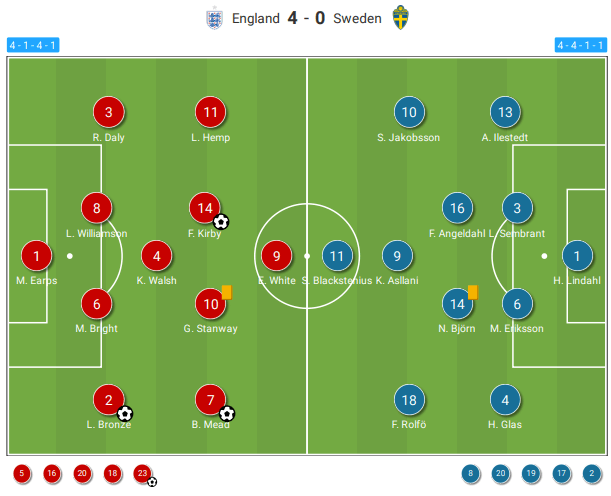
England’s starting eleven was unchanged for the fifth consecutive match. The starting formation though, was a slightly different 4-1-4-1 formation to the normal 4-2-3-1 as Wiegman looked to go more aggressive in the midfield. Once again substitutions played a part in the win, with the earliest being Russo coming off the bench in the 57th minute to score the third goal with an audacious backheel.
Sweden made two changes to their starting eleven with Nildén swapped out for Bayern Munich Frauen’s Glas in left-back and Jakobsson replacing Rytting Kaneryd on the right wing. Gerhardsson set his team up in a 4-4-1-1, which is a variation on their usual 4-4-2, but the two strikers work vertically together instead of horizontally. The reasoning behind the tactical change was clear from how Sweden chose to press the backline of England which in turn hindered their defensive performance further down the pitch. The Swedish press is what this piece will explore first.
Sweden’s Press
Sweden have pressed every team in the tournament and didn’t look to change that against the Lionesses. With a squad capable of playing the demanding, pressing playstyle, Gerhardsson modified his press to England, hoping for this to dictate where England would build up from the back.
Sweden’s main philosophy was to defend spaces on the pitch so that they could press players in front of them when they receive the ball. The shape that Sweden used to press England was very disciplined as the midfield line was spaced evenly apart when in a mid and high block. The two strikers for Sweden worked together to block the passing lanes into the midfield where Fran Kirby and Georgia Stanway, who have been influential in midfield for the Lionesses, were positioned. The blocking through to the midfield was mostly performed by AC Milan’s Kosovare Asllani, the deeper of the two strikers.
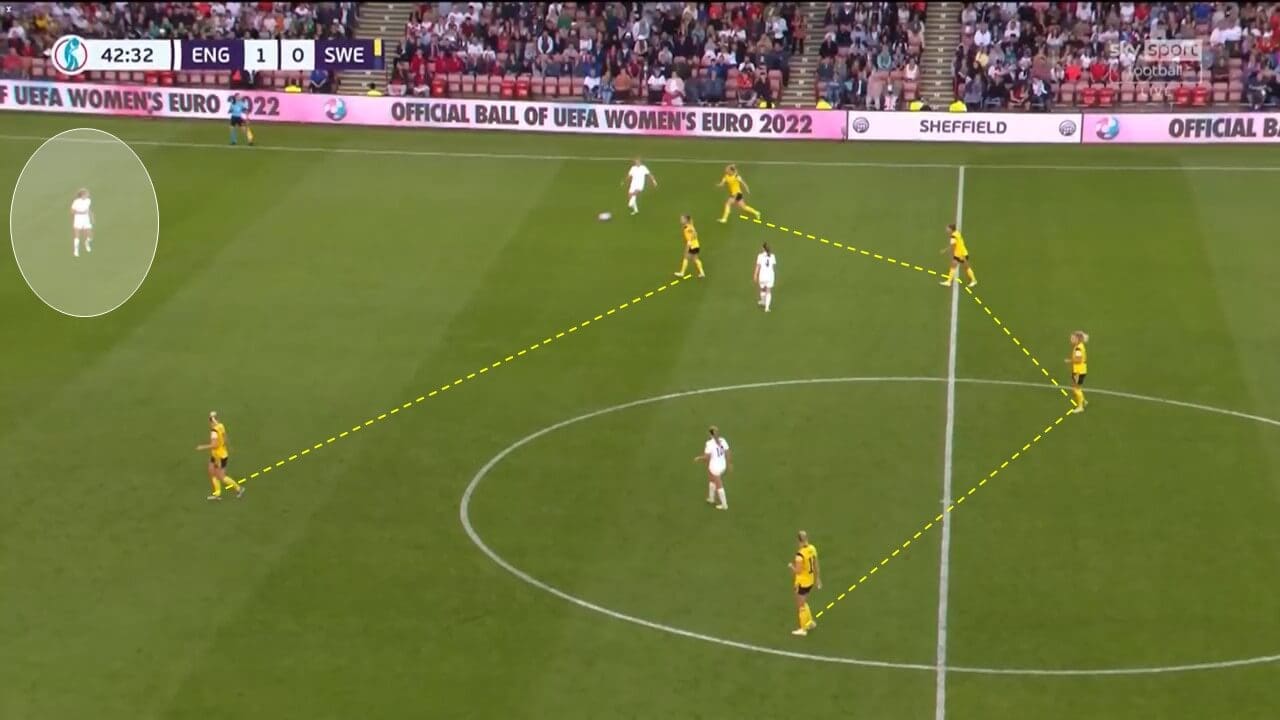
A unique tactical decision by Gerhardsson was to give Arsenal defender Leah Williamson, in the left centre-back position, lots of time on the ball. By allowing the left centre back time and space, Sweden used the increase in free players to block passing options available to Williamson and were hoping from that to intercept or force a ball forward, nullifying the build-up play from England. Giving the left-sided centre-back the time on the ball may have been because Sweden felt that is the weakest side of England’s build-up yet the quality in each position for England is potentially the best at the tournament.
The press from Sweden didn’t stop the build-up from England as the hosts used their 60% possession to enter the final third 50 times compared to the 40 passes to the final third by Sweden. To bypass the press, England used quick interchanging passes between the midfield and the defence to open up the space left by because of the pressing player vacating the space which they would be defending.
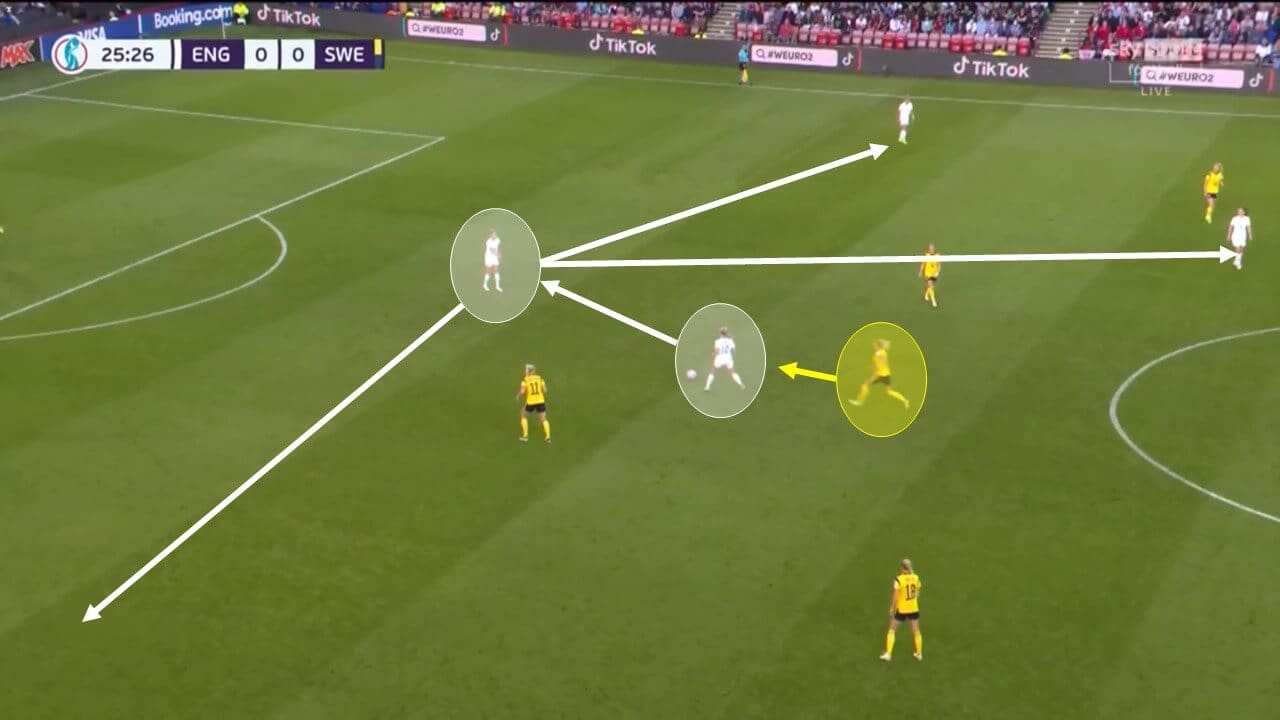
In hindsight, the press from Sweden exposed the weaknesses in their shape making it easier for England to break down or bypass altogether. It took England around half an hour but once the hosts found the key to unlocking the press they were able to constantly attack Sweden without pressure.
Sweden’s weakness behind the press was their open shape which allowed the Lionesses to run the Scandinavian side ragged across the whole pitch.
Sweden’s exploitable shape
Sweden’s issues were largely down to the defensive shapes they deployed during the match as the weaknesses were quickly discovered by England, making the game plan unproductive for the rest of the match. The first of these problems was from the open spaces between the Sweden players which gifted England the freedom to drift around the centre of the pitch unmarked.
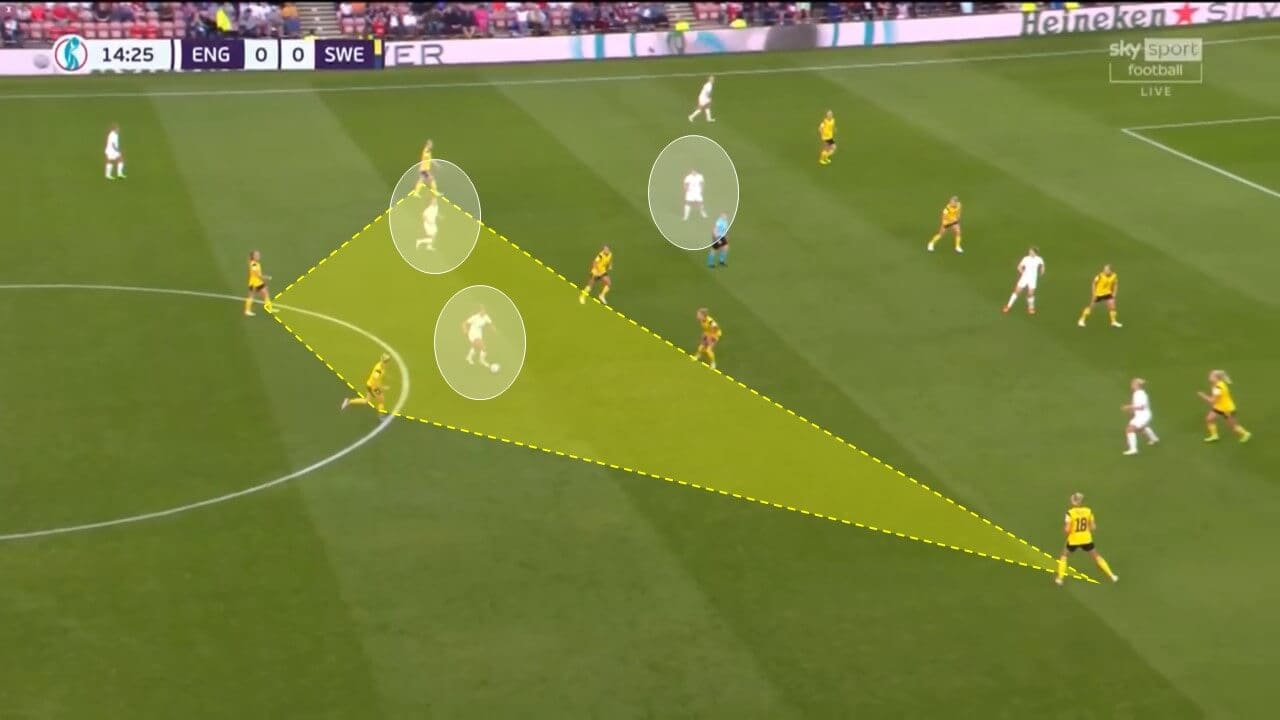
With Sweden sticking to defending spaces and then pressing the ball when the closest player has it, allowed England to exploit this without much effort. Gifting the Lionesses lots of space and time to spray the ball across the pitch meant it was only a matter of time before England would score, considering the quality they have in their ranks.
For the first goal, England started the move by playing the ball around the back. Williamson, who had pressure applied to her in this instance due to being close to the halfway line, played the ball out wide to Daly in lots of space on the left wing. Daly, taking her first touch on the back foot, was able to break the midfield line of Sweden, getting beyond her presser.
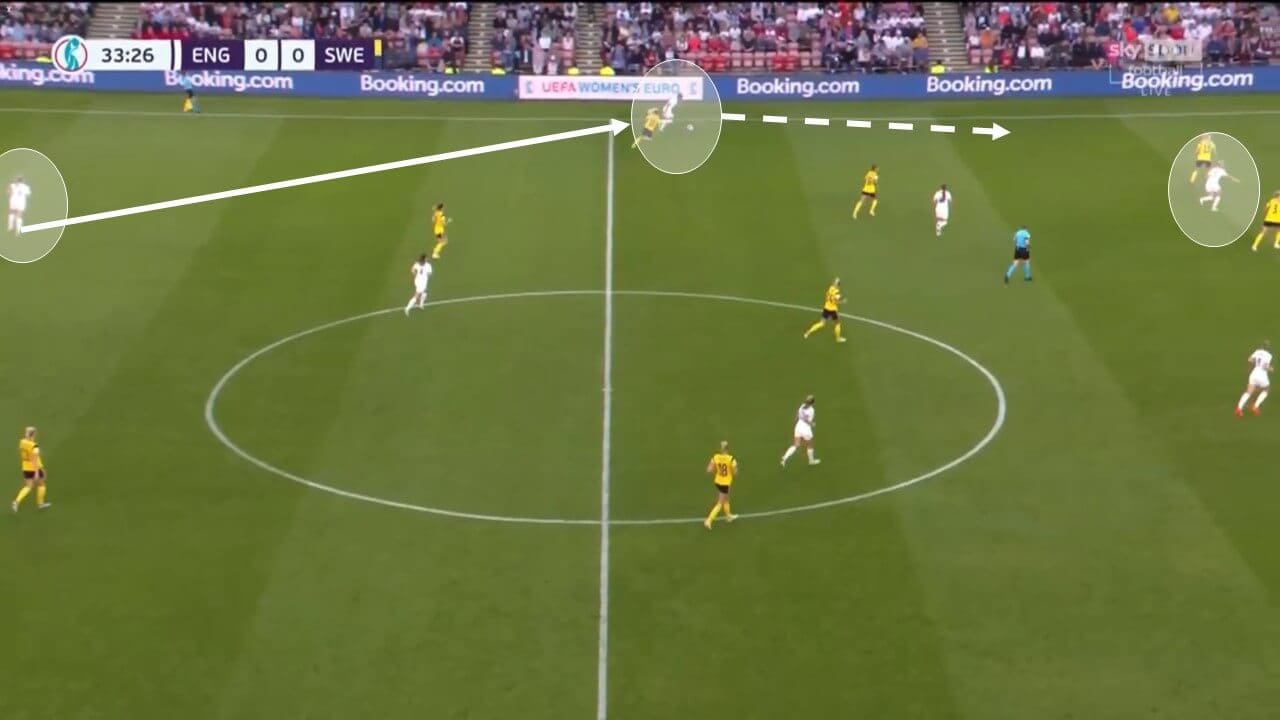
From here, Daly did excellently, playing a ball through for Hemp behind Sweden’s defensive line. After a teasing first-time cross, which White was inches away from connecting with, the ball found its way to Lucy Bronze on the opposite wing.
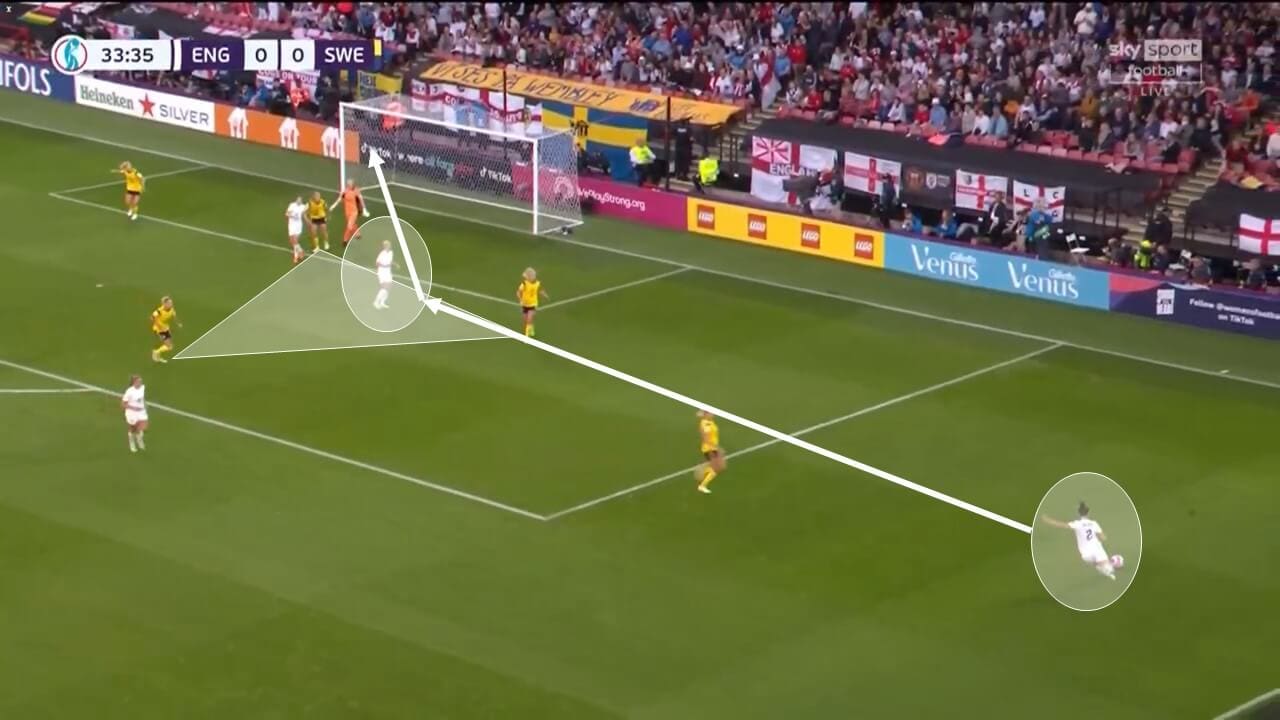
With a superb first-time cross, the Barcelona right-back picked out Mead, who volleyed home the first goal for the Lionesses. The problems for the first goal started with Sweden’s ineffective press. This had a snowball effect on their defensive shape against Daly’s through ball and it gave Bronze the time to put in a cross without pressure from a dangerous area in the right wide channel.
Following on from the first goal and early second goal, Sweden changed their low block shape to a very defensive 6-2-1/5-3-1 to deal with the danger England possessed in the wide areas of the pitch.
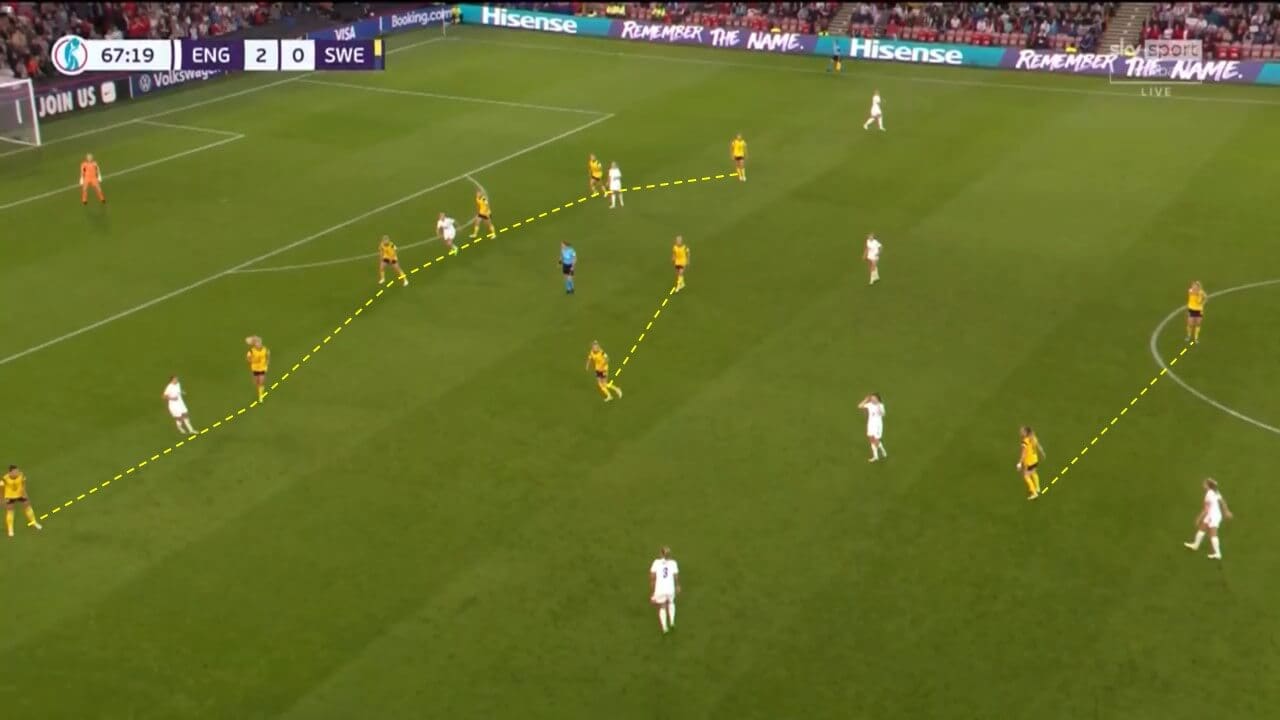
As defensive as this shape looks, it made it even easier for England to break down with Sweden pinned back in their own half. Instead of just attacking down the wide channels England could attack down the central channels as well, and with the quality that the Lionesses possess, they tore Sweden’s defence apart from the time they were given on the ball.
For the third goal, Sarina Wiegman’s side cut straight through the middle of Sweden’s defence, with little to no pressure on the ball. Walsh picked up the ball after a string of passes down the left-hand side for England and using a simple turn to move freely from a labouring Sweden midfielder, she had a prime spot to play a through ball. Making a run from outside to in, Kirby ran onto a through ball from Walsh to get into the box behind the Swedish backline.
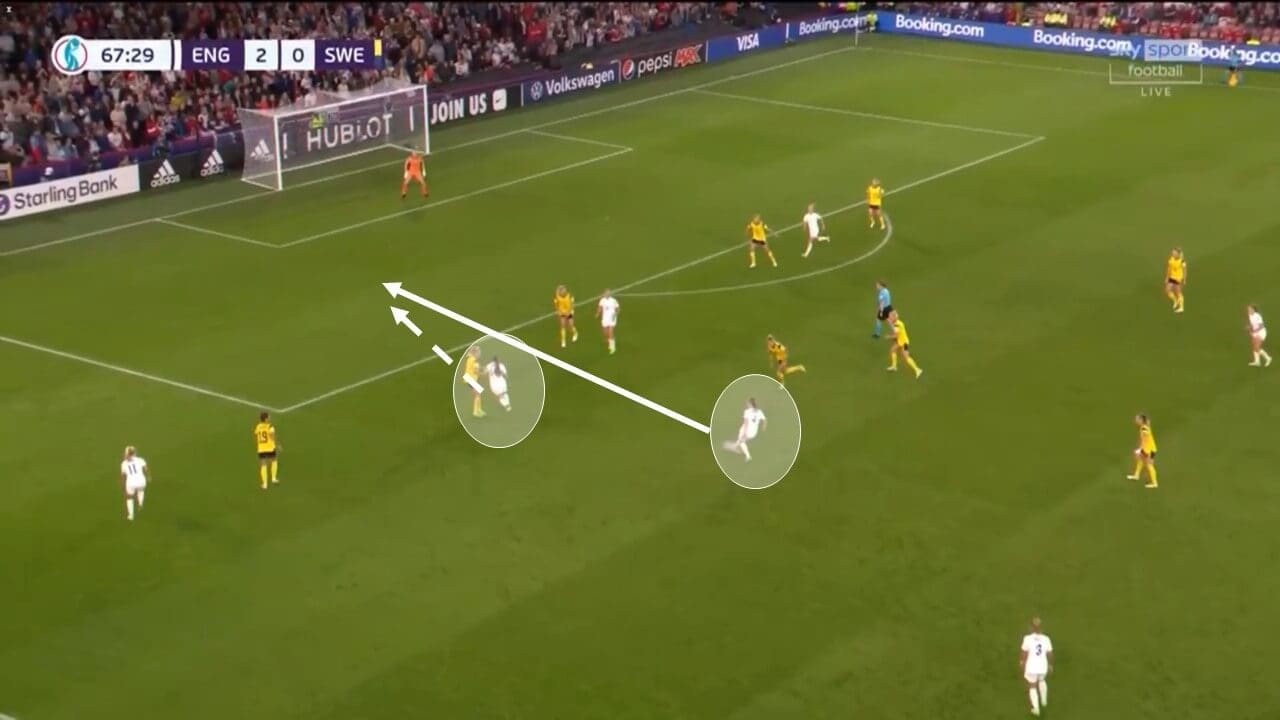
Again, with a first-time ball into the box, Kirby picked out substitute Russo between the penalty spot and six-yard box completely unmarked. Beth Mead, although not physically touching the ball, played a big part in creating the space for Russo in the box as, when she ran, the central defender locked onto her towards the front post. This then created the space in front of the goal for Russo to take a shot.
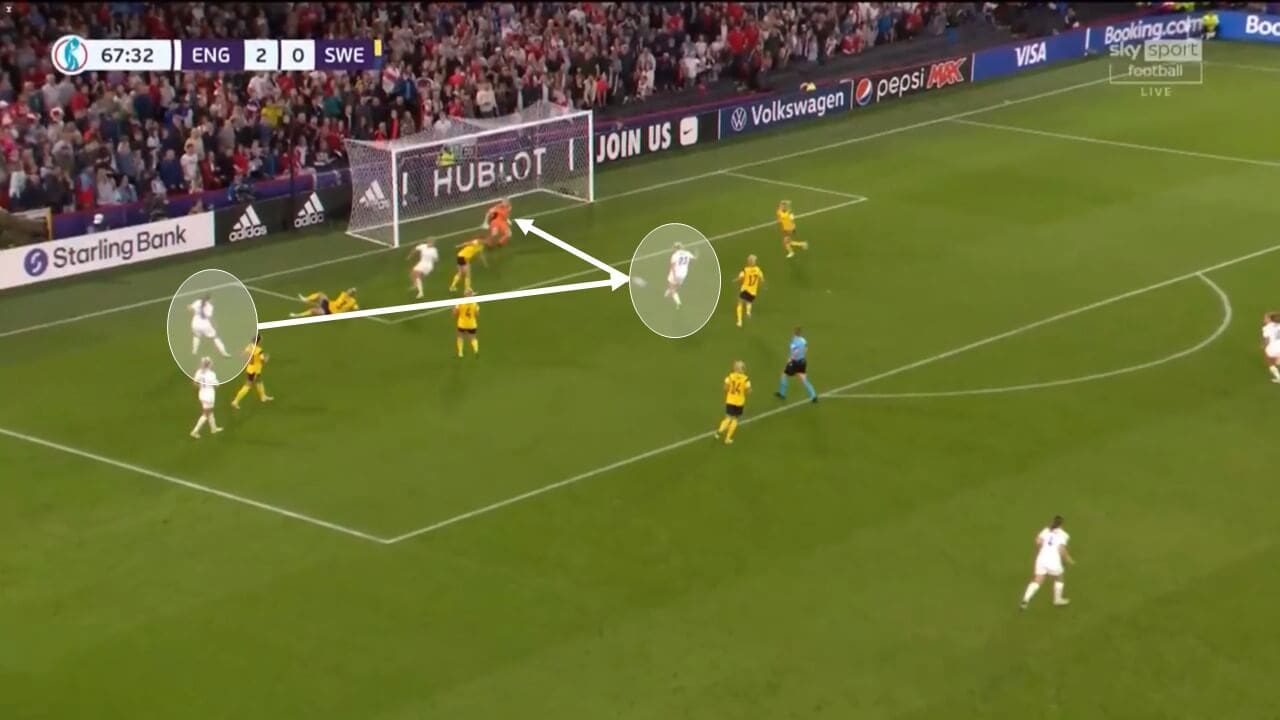
Russo’s effort was saved by 39-year-old Lindahl, who had a torrid time in goal, but after latching onto the second ball Russo amazed the 9.3 million viewers across England as she pulled off a cheeky, yet brilliant backheel through the legs of Lindahl after just 11 minutes of being on the pitch.
The final nail in the coffin for Sweden was the fourth goal, with poor goalkeeping and a simple through ball between the middle of the Scandinavian team’s defence, Kirby sent England to the final.
The Lionesses were too much to handle for Gerhardsson’s side. However, looking ahead to the final, Sweden did prepare an attacking strategy which gave the one-time Euro winners a few good opportunities to take the lead in the first 15 minutes by targeting the room left by Lucy Bronze.
Sweden’s early success
Within the opening minutes, Sweden were straight on the Lionesses. Gerhardsson had clearly given the instruction to aim for the space left when Lucy Bronze gets forward to join the attack. Within the first 15 minutes, Sweden had an xG of 0.85 to England’s 0.05, and two great chances to score proving the 62-year-old manager had found a weakness in Sarina Wiegman’s defence.
In the opening 20 seconds, Sweden had their first chance to take the lead from a pass into the vacant space, targeted by Gerhardsson’s side, for Blackstenius to run onto.
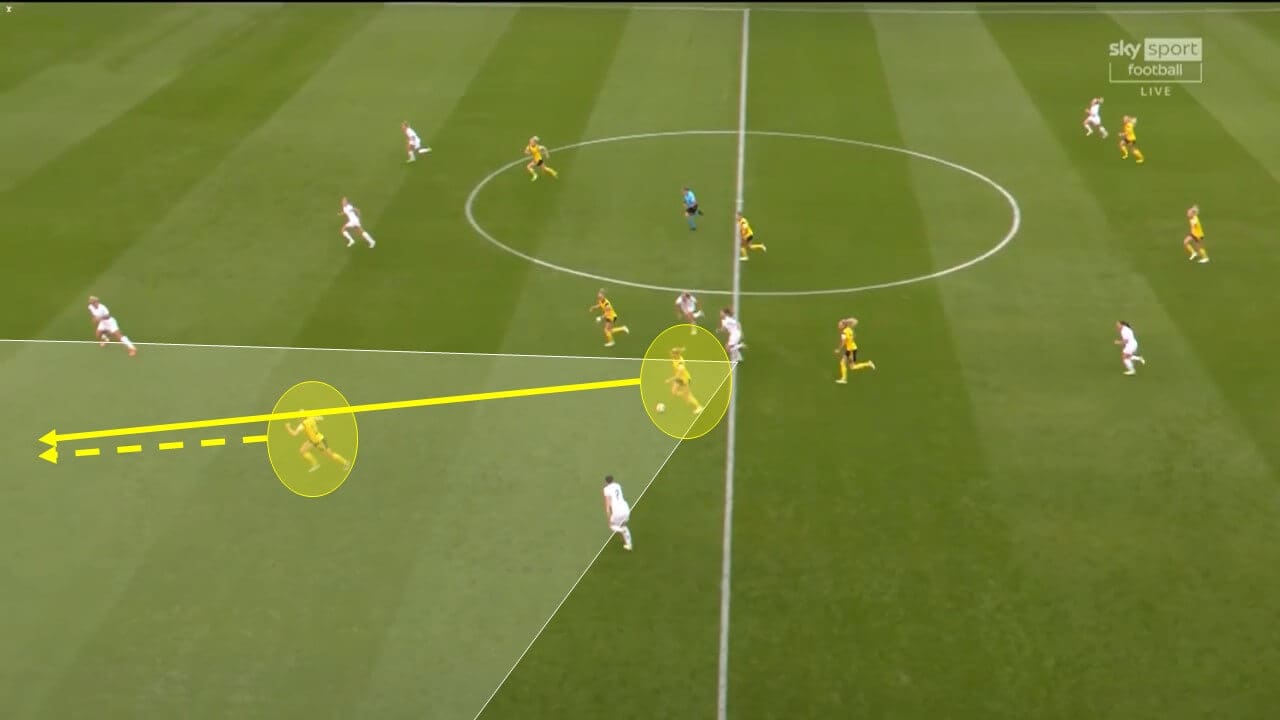
A great save by the outstretched foot of Mary Earps was all that stopped Sweden from instantly taking the lead in the tie. This gave Sweden lots of confidence in the game plan early on in the match, after seeing their manager’s words ring true from the first minute.
Just six minutes later, using this exact same ball between Bright and Bronze, Blackstenius was through on goal again.
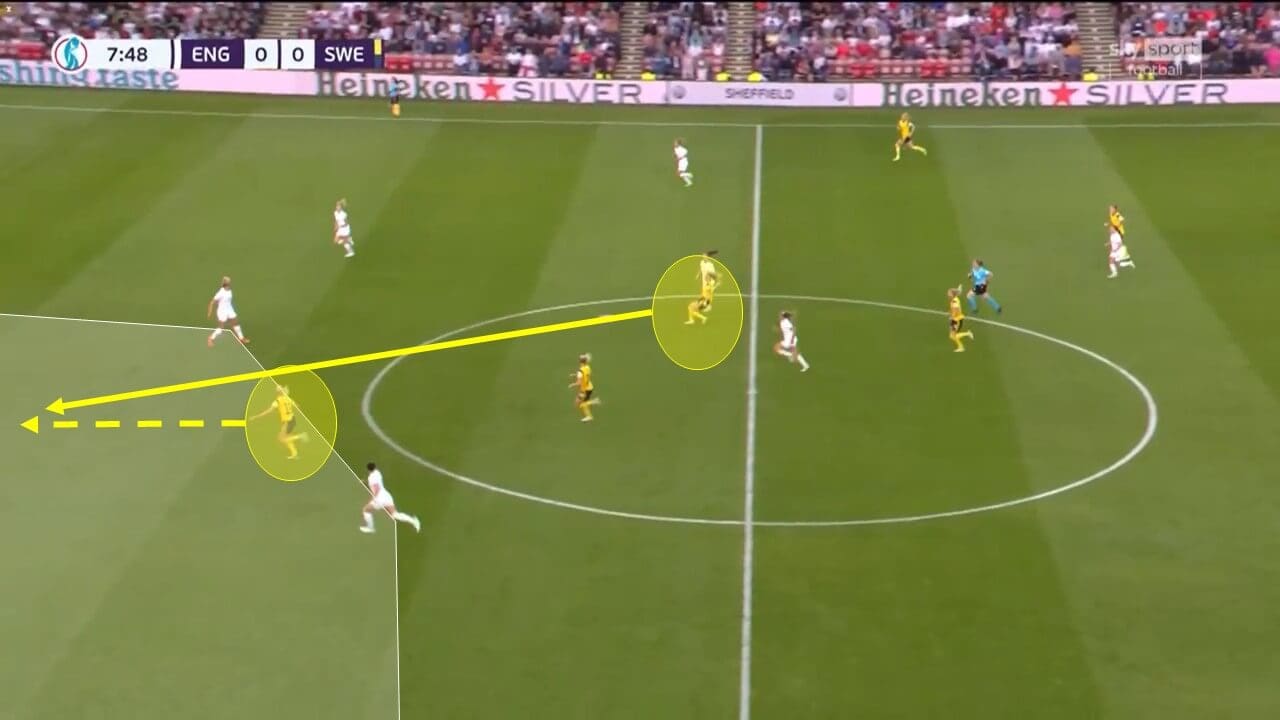
This time, Bronze was quick enough to recover by putting the WSL striker off balance for her shot. With a cleaner strike, this could have hit the back of the net and changed the atmosphere in the stadium completely. England knew they had to find a solution to the problem because Sweden were creating chances too easily.
To combat the issue, Chelsea defender Bright would tuck around more to cover the space. This was a reasonable solution because it still enabled Bronze to join the attack which was problematic for Sweden during the match. When not with the attack, Bronze would stay narrow with her centre back to ensure the gap was completely covered between her and her teammate.
England may have weaknesses which are only discovered when the opponent targets them. But, with this team, the Lionesses were comfortable making tactical changes on the pitch reflecting the intelligence of their coach Wiegman, who will now be preparing for the final match of the tournament.
Conclusion
This match had a hectic opening fifteen minutes as Sweden created a few great chances to take the lead. Despite that, England solved the issues they had at the back while finding a weapon to beat the press from Sweden, as shown in this analysis. With Sweden’s tactics in attack nullified, the Lionesses tore Gerhardsson’s team apart using the spaces and freedom gifted to them across the pitch.
England will go into the final against Germany with bags of confidence having won two knockout matches in spectacular fashion, showcasing their capability to beat the best teams. With a packed Wembley Stadium on Sunday, it will be a spectacular final as Wiegman’s side look to win their first EURO finals in the nation’s history across both genders.






Comments